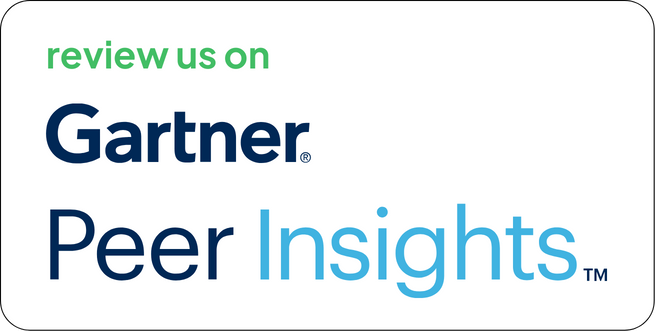Security teams working in Azure environments often lack continuous visibility into cloud resources. While cloud service providers like Microsoft offer native monitoring tools, they fall short when teams need scalable asset intelligence, business-aware risk scoring, and cross-functional workflows.
That’s where Azure Active Directory Integration with Strobes, facilitated by CSPM tools like Prowler and CloudSploit, delivers a practical advantage.
This article explains how the integration works, the value it provides, and why it’s relevant for organizations operating cloud-native or hybrid architectures.
What Is Azure?
Microsoft Azure is a leading public cloud platform offering compute, networking, storage, and identity services at scale. Enterprises rely on Azure to host applications, databases, APIs, and development pipelines. Its asset ecosystem spans VMs, containers, load balancers, key vaults, SQL servers, and more.
Key advantages include:
- On-demand infrastructure provisioning
- Global scalability across regions
- Native integrations with Active Directory and DevOps pipelines
- Tagging and policy-based governance
However, Azure lacks centralized, risk-prioritized visibility across its complex resource graph. While tools like Microsoft Defender and Azure Security Center detect misconfigurations, they don’t provide deduplication, contextual enrichment, or remediation orchestration.
What Is Strobes?
Strobes is a Continuous Threat Exposure Management (CTEM) platform that helps organizations bridge the gap between raw findings and operational security outcomes. It supports:
- Risk-Based Vulnerability Management (RBVM)
- Application Security Posture Management (ASPM)
- Attack Surface Management (ASM)
- Pentesting-as-a-Service (PTaaS)
Strobes functions as a coordination layer between CSPM outputs and security workflows. Rather than replacing tools like Prowler or CloudSploit, it consumes their output, refines it, and routes it into risk-centric decision pipelines.
Why This Integration Exists?
Security engineers use CSPM tools like Prowler and CloudSploit to detect:
- Misconfigured storage permissions
- Open management ports
- Publicly exposed VMs
- IAM privilege escalations
- Insecure logging configurations
But acting on these findings, at scale, is time-consuming. Without normalization and prioritization, these tools flood teams with thousands of line-item exposures that lack clarity.
By integrating CSPM scan outputs into Strobes, security teams can:
- Consolidate Azure assets into a single inventory
- Filter and score misconfigurations based on exploitability and business relevance
- Trigger structured remediation actions
- Maintain audit-ready records across resource types and environments
What the Integration Does?
1. Ingests Azure Resource Metadata via Prowler or CloudSploit
Strobes accepts CSPM scan outputs as JSON, XML, or direct API feeds. These outputs include:
- Resource metadata: type, region, resource ID, subscription, tags
- Configuration state: ACLs, encryption status, public access
- Risk findings: policy violations, severity, recommendation, evidence
- IAM bindings: role assignments, service principals, and conditional access policies
These scans can be scheduled or streamed depending on the environment’s maturity and frequency of changes.
2. Normalizes, Deduplicates, and Tags
Once ingested, Strobes parses the data into its normalized schema. It eliminates redundancy across scans by:
- Merging duplicate resources reported by multiple CSPM tools
- Detecting and discarding false positives from decommissioned assets
- Aligning resources using subscription ID, DNS, IP address, and custom tags
This prevents the same misconfigured VM from appearing ten times across ten scans, reducing fatigue and improving response time.
3. Applies Context-Aware Risk Scoring
Strobes applies a layered risk scoring model:
- Misconfiguration criticality from CSPM tools
- External threat intelligence on publicly exposed ports
- Business tag parsing (e.g., “Production”, “PCI”, “Crown Jewel”)
- Asset exposure context (e.g., public IP, unencrypted disk, unauthenticated API)
For example, a misconfigured Key Vault open to the internet will score higher than a storage account open to internal traffic only. This lets teams prioritize based on potential impact.
4. Triggers Workflows Based on Rules
Security is most effective when it’s automated. With Strobes, misconfiguration findings are linked to rule-based workflows:
- Automatically create Azure Boards or Jira tickets for critical issues
- Assign issues to teams based on resource tags or owner metadata
- Send real-time Slack or MS Teams notifications to accountable stakeholders
- Track SLA compliance and retesting verification
These workflows are built on structured logic and don’t rely on manual emails or spreadsheets.
5. Enables Unified Reporting and Dashboards
All Azure resource findings live within the same reporting system as other asset classes. You can:
- Filter exposure reports by cloud, environment, or resource type
- View risk heatmaps of Azure regions with the most critical misconfigurations
- Run compliance reports mapped to CIS Azure Foundations Benchmark
- View SLA performance, aging findings, and asset-specific timelines
These dashboards support security, GRC, and executive teams with tailored, real-time insights.
Why It Matters
Reduces Noise From Repetitive CSPM Alerts
Prowler and CloudSploit often flag the same finding across hundreds of resources. With Strobes:
- Duplicate findings are automatically collapsed
- Previously fixed issues are archived or marked reintroduced if needed
- Historical exposure trends are retained for RCA and audit purposes
Adds Missing Context to Each Exposure
CSPM tools don’t provide exploitability insights. Strobes enriches each finding with:
- Threat intelligence (e.g., active exploitation of management ports)
- Exposure mapping (public IPs, DNS records)
- Asset business tags (e.g., PCI, production, dev)
This allows teams to prioritize misconfigurations that could cause actual impact.
Enables Cross-Team Coordination
Instead of sending CSVs to DevOps teams, the integration automates ticket routing, ownership tagging, and progress tracking. Security can trace every finding, from ingestion to resolution, without bottlenecks.
Scales With Enterprise Complexity
Whether managing 100 or 10,000 resources across multiple subscriptions, the integration adapts to:
- Multi-subscription ingestion
- Multi-tenant dashboards by business unit
- Region-specific policy baselines
- Tag-driven resource grouping
Final Thoughts
If your organization relies on Azure and struggles to keep up with asset sprawl, configuration drift, or misconfiguration response, Azure Active Directory Integration with Strobes is built to fix that.
By connecting Prowler and CloudSploit scan outputs into Strobes, your team gains operational clarity, automated prioritization, and accountable remediation at scale.
Ready to make Azure resource risk visible and actionable?





